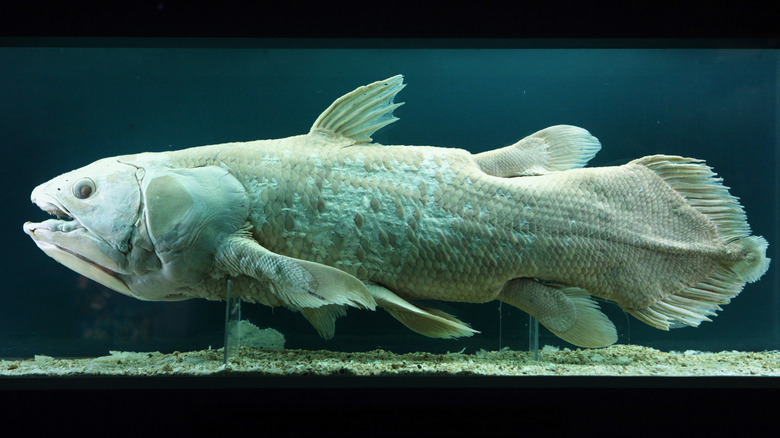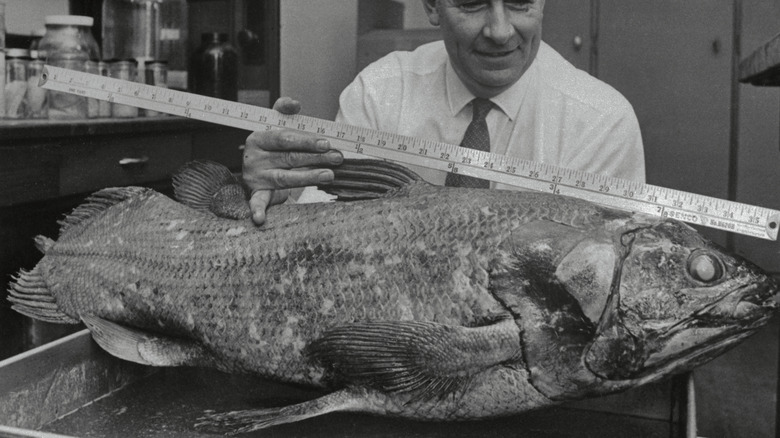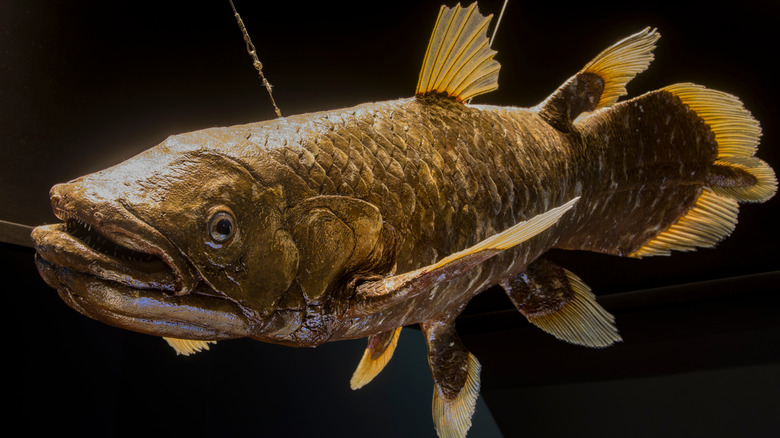The 400-Million-Year-Old Fish Everyone Once Thought Was Extinct
Imagine if you turned on the news tonight and saw a report that a hunter had accidentally shot down a pterodactyl. That's almost what happened on the Eastern Cape of South Africa in December of 1938, except that it wasn't a pterodactyl ... it was something even older.
Just days before Christmas of that year, Marjorie Courtenay-Latimer, curator of the East London Museum, received a phone call that would ultimately flip the scientific world on its head. It was from Hendrik Goosen, captain of a local fish trawler, who had caught an odd-looking fish in one of his nets that he thought Courtenay-Latimer might be interested in examining. The curator hurried to the docks to discover a five-foot-long behemoth of a fish with sparkling blue and white scales and a set of bizarre looking fins that stood apart from anything she had laid eyes on before.
Courtenay-Latimer wrote to a friend of hers, Rhodes University professor James L.B. Smith, including a hand-drawn sketch of the unusual fish, and asking whether he could help identify it. Smith immediately noticed similarities to fossils of a prehistoric sea animal known as a coelacanth (SEE-lah-kanth), but everyone knew that coelacanths had gone extinct 66 million years earlier. Everyone knew, that is, until Smith announced the discovery in the journal Nature, and changed the minds of scientists the world over. To honor the contribution of Marjorie Courtenay-Latimer, Smith bestowed the coelacanth with the scientific name, Latimeria chalumnae.
The multiple discoveries of the coelacanth
Coelacanths have been the subject of multiple "discoveries," going back to when the first fossils were found. The earliest description of a coelacanth fossil came in 1836, courtesy of Louis Agassiz, who is better remembered for his achievement the year prior of being the first person to describe the extinct giant shark, megalodon.
The oldest coelacanth fossils date back to approximately 420 million years ago, which places them at the beginning of the Devonian period. The Devonian was a period within the Paleozoic era, predating the first dinosaurs by roughly 200 million years. That means that the time between the rise of the first coelacanths and the rise of the first dinosaurs is about the same as the time between the first dinosaurs and the present day.
Following the announcement of the existence of the coelacanth, Smith offered a reward for more specimens. After waiting years, he heard from a fisherman from the Comoro Islands in the Indian Ocean who reported that coelacanths had long been known to his people as gombessa, and were occasionally caught by accident. The next great shock came in 1997, when Mark and Arnaz Mehta Erdmann, a couple vacationing in Indonesia, encountered a strange fish being sold at a street market. Luckily, Mark happened to be an ichthyologist, and identified the fish as a coelacanth. Not just that, but a new species of coelacanth now known as Latimeria menadoensis, joining L. chalumnae as the only two coelacanths now known to exist.
Coelacanths are unlike any other fish
Coelacanths have features not found in any other fish alive today. Their most striking characteristic is the presence of lobed fins — fins that protrude from the body on stunted appendages that look almost like little legs. The coelacanth's lobed fins are in pairs that move in alternating directions, just like the four legs of a horse. It also has an extra tail lobe, making it look as if the coelacanth's tail has a tiny tail of its own.
Coelacanths also have a more subtle, but even more unique feature lying beneath their skin. They have an intracranial joint, a hinged joint in the top of their skulls, that allows them to open their mouths incredibly wide and swallow other fish for a meal. It is the only animal alive on Earth today that has a joint in its skull. This trait has only been observed in the fossils of extinct fish like we once thought the coelacanth to be.
Unfortunately, no species can escape the threat of extinction forever. The fact that coelacanths evaded scientists for so long points to just how small and isolated their populations are. In the region of the Comoro Islands, there are estimated to be 300–400 coelacanths, but we don't have good numbers on populations elsewhere. Coelacanths were aggressively hunted for a period after their discovery, as a black market for the "living fossils" arose. Today, L. menadoensis is listed as vulnerable by the IUCN, and L. chalumnae is critically endangered.


